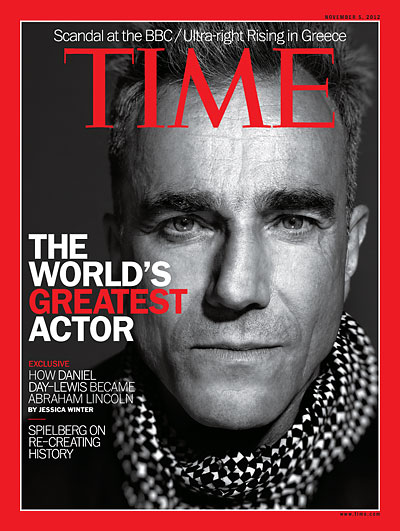The Time Inc sale threatens the primacy of brands
The dust won’t truly settle on the news that Time Inc. has been sold to Meredith Corp. for $1.85 billion in cash for some time yet, at least until we know what the owner of allrecipes and other lifestyle brands intends to do with Time Inc’s brands. The facts, as we know them, are that the deal will combine two radically different portfolios into a media giant capable of reaching, according to Meredith, a readership of 135 million with a paid circulation of nearly 60 million, as the culmination of a long-held desire from Meredith that saw failed bids earlier this year and in 2013.
In the meantime, there are plenty of unanswered questions about the acquisition, from what Meredith plans to leverage its expanded portfolio of brands to do to what it says about the state of the magazine industry.
For instance, can the Koch Brothers, who backed the deal to the tune of $650 million, really refrain from influencing the editorial and commercial direction of the new look Meredith Corp? The pair are known for their backwards views on climate change and workers’ rights, and some are worried that brands like Time, People and Fortune will be coloured by those beliefs. With just a hint of cynicism, tech reporter for the NYT Mike Isaac said:
koch brothers definitely bought in for a fifth of time inc in order to have no editorial control or input, i super believe this https://t.co/VEHnjA6tMr pic.twitter.com/2xcp8gcvpU
@MikeIsaac November 27, 2017
Given all the talk lately about the power of media moguls – even if, as the speculation around 21st Century Fox suggests, that power is waning, it’s likely to be a concern for some time yet.
Another question is what Meredith intends to do with the brands which have overlap or potential synergy with its existing publications. The deal puts a total of 22 food brands, including All Recipes, Cooking Light, Martha Stewart Living and Sunset, under the aegis of Meredith. With food, and particularly premium food and cooking, being a target for investment from publishers with an eye on video and ecommerce, it creates a powerhouse with the potential to dominate the luxury video market. Similarly, the overlap in subject matter if not necessarily audience between Time Inc and Meredith’s lifestyle brands could suggest either consolidation or that the brand has plans to own the vertical outside of simply the magazine titles.
Reuters notes, for instance, that “Analysts have said that bulking up on publishing assets could give Meredith the scale required to spin off its broadcasting arm into a standalone company.”
Meanwhile, Meredith has identified backroom synergies that will enable it to cut costs by $400-500 million over the first two years of operation.
“The magazine industry here… was so successful that it didn’t know what to do with the money other than hire. Like the newspaper industry, it’s now paying the price and enduring painful change in its business model.”#TimeInc $Time @Poynter https://t.co/JIMeiWxDc3
— Roben Farzad (@robenfarzad) November 27, 2017
There is also the matter of to what extent Meredith was buying up the expertise of Time Inc’s brands in diversifying revenue streams. The deal will reportedly lead to the combined brands generating one quarter of its revenue from subscriptions, rather than relying on advertising. Meredith’s fiscal report in July also noted that it was making digital growth a priority – shocking, I know – but its own release on the Time Inc deal specifically noted it was in service of growing revenue in areas other than digital display, areas that Time Inc. has had notable success in with brands like Travel + Leisure and Fortune:
“Meredith will be well-positioned to benefit from fast-growing digital advertising platforms, including native, video, shopper marketing, programmatic and social. Also, Meredith expects to increase consumer revenue from diversified streams, including bundled circulation activities, brand licensing, ecommerce, events, video creation, content management, and marketing services.”
But on the other hand, Time Inc’s flagship brand, Time, has struggled to leverage its fame and influence in the age of digital. Jeffrey A. Trachtenberg, writing for the WSJ, points out:
“…in recent years, the magazine publisher lost ground as a shift among readers to digital platforms cut into traditional print revenue and a new generation of online rivals emerged.”
And there are even rumours flying around about the future – or lack of – about the Time, Future and Money brands. Industry veteran Joe Nocero, writing for Bloomberg, says:
“When Meredith first tried to buy Time Inc. in 2013, it did not want to include Time, Fortune, Money or Sports Illustrated in the deal. There are already rumors that Meredith plans to shut down Time. My guess is that Fortune and Money are goners, too. None of them make money.”
So, even though there are questions about the specifics of the sale, media companies should look to the market reaction to the news when they next reappraise their own assets:
– As print and digital ad revenue are far from a given to provide significant growth, the most valuable brands are those that are perceived as ‘premium’ within a niche, rather than outsized in a medium.
– In a post-medium world, where does the value of a brand come from? The purchase is based, in part, on Time Inc’s brands recent history of revenue diversification or potential to grow within events, e-commerce etc.
– As the question of the Koch Brother’s influence rears its head, remember that scrutiny of powerful public figures is fiercer than ever before – and can even scupper deals if public perception skews too far towards negative.
Martin Tripp Associates is a London-based executive search consultancy. While we are best-known for our work in the TMT (technology, media, and telecoms) space, we have also worked with some of the world’s biggest brands on challenging senior positions. Feel free to contact us to discuss any of the issues raised in this blog.